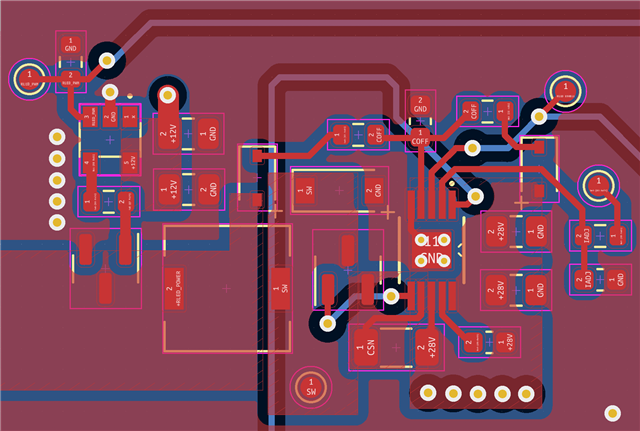I'm designing a lighting application that will drive a string of 8x LEDs at 24.8V/60mA from an input voltage of 30V. I'm chosen an ROFF1 of 2KΩ, for a switching frequency of ~546khz. I'm using a 47µH inductor. and my shunt-FET has an RDSon of 0.16R. The shunt FET has a total minimum pulse time of < 20ns (turns off delay + turn off time + turn on delay + turn on time).
I've calculated my ROFF2 by choosing the minimum frequency (20khz) I want the driver to switch at in its shunted state. I've calculated this value to be 2.24MΩ, which would result in a Toff of 50µs. Since this is well below the maximum Toff of 300µs, I thought this would work. In testing my light, however, I noticed that the output starts flickering below a certain PWM duty cycle, before stabilizing at the lowest value. I investigated with my oscilloscope, but I'm having a hard time interpreting the traces in the state where the light is flickering.
This is a measurement of the switching node from the stable state:
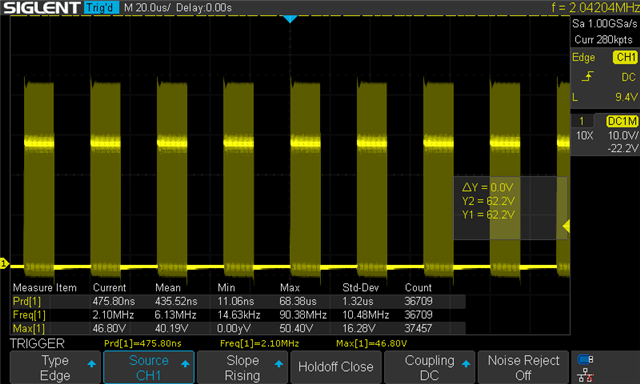
From what I can tell, this is operating as it should. The off time in this case is ~20µs, so the lower frequency operation mode driven by ROFF2 never has a chance to kick in. If I lower the duty cycle on the shunt FET PWM, I start to see this at the switching node, and the light output starts flickering:
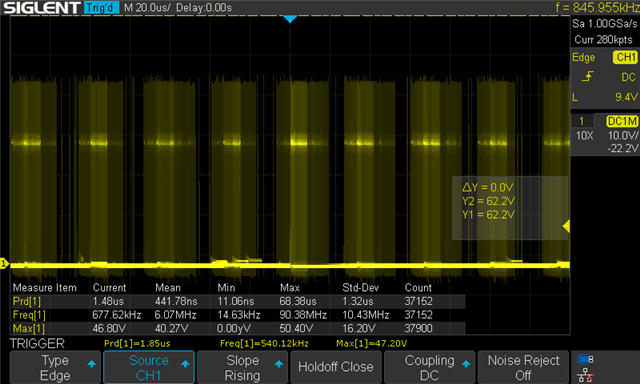
The off time is still above the 50µs limit (at 20khz) that would result in the ROFF2 frequency being in effect. It's unclear what is happening here. This transition is accompanied by instability in the light output.
Finally, if I reduce the duty cycle enough I see this:
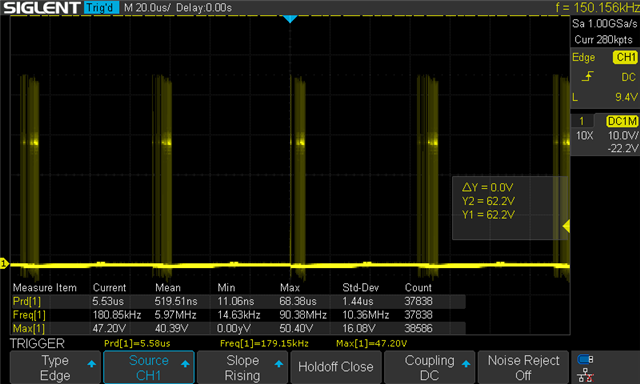
The light stabilizes here at a low output level. I believe that ROFF2 triggers a switching cycle here, since the off time is > 50µs. The overall time off is still well above the maximum off time of 300µs, so my sense is that the problem is not relative to exceeding that maximum.
Here is a schematic of my design:
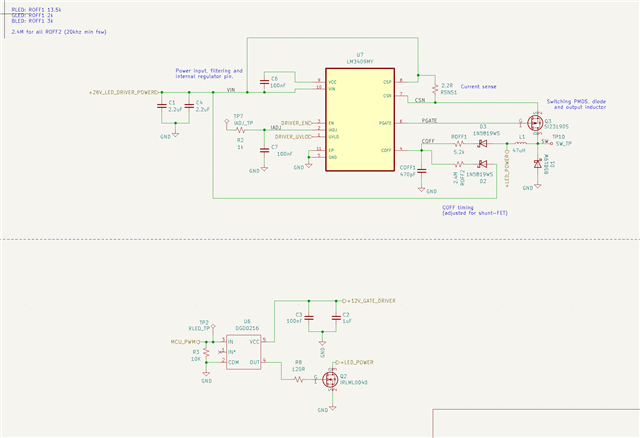
And the PCB layout:
